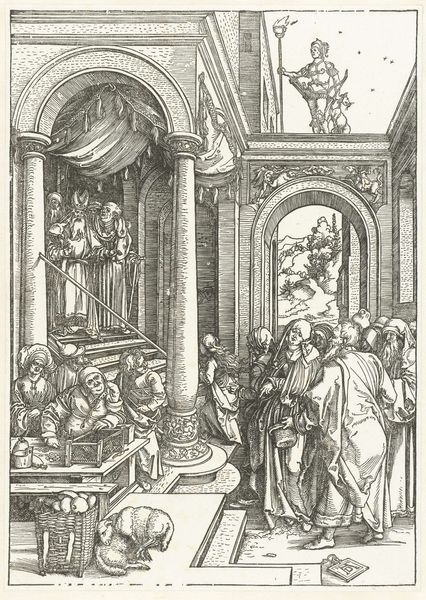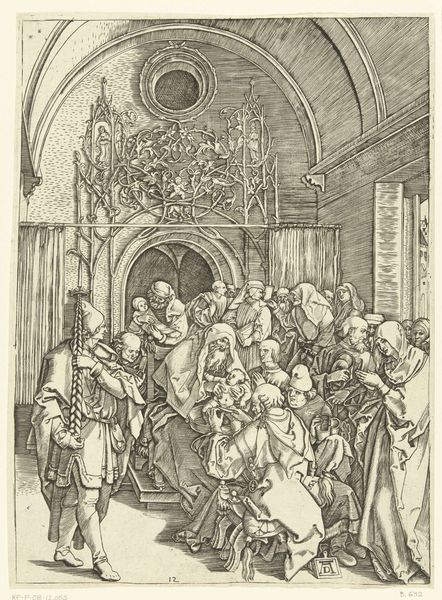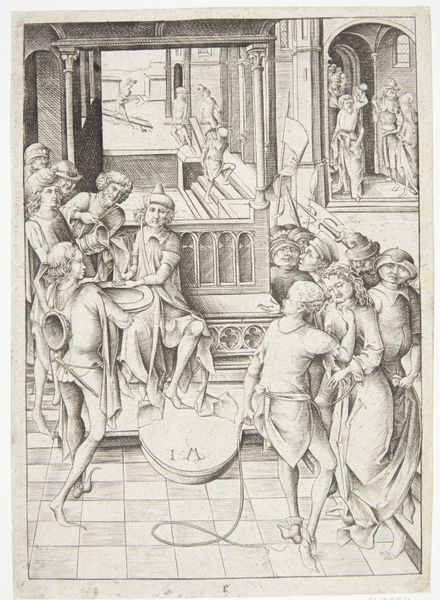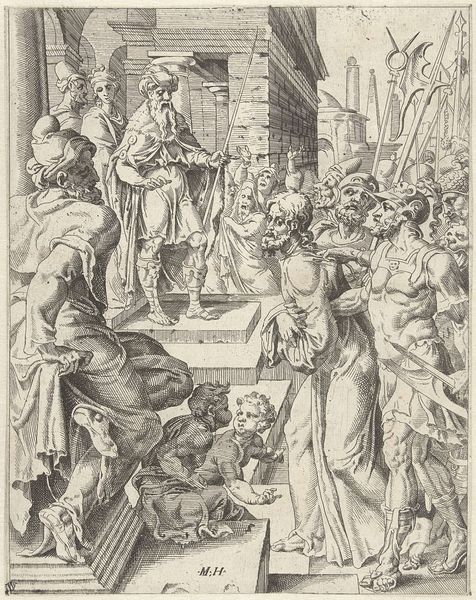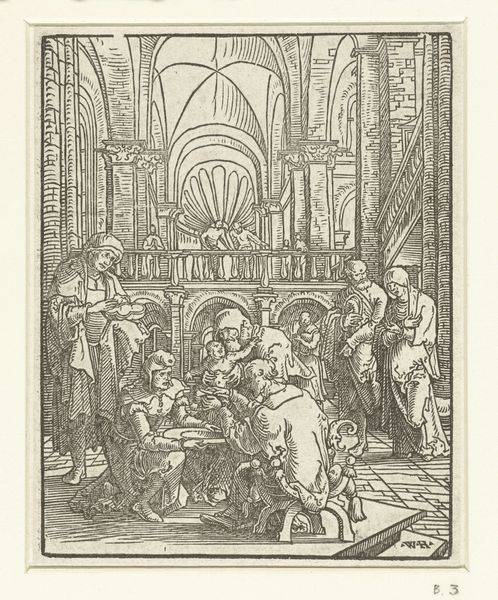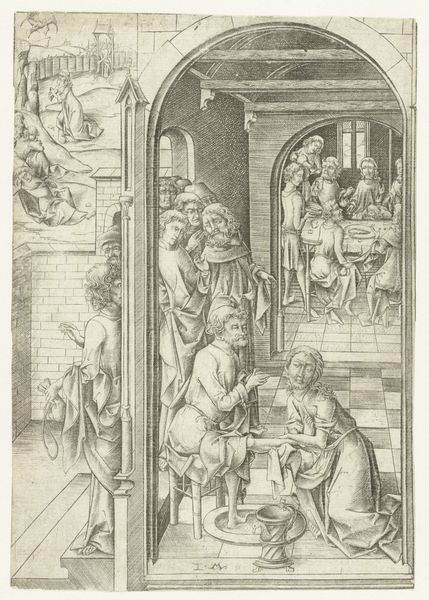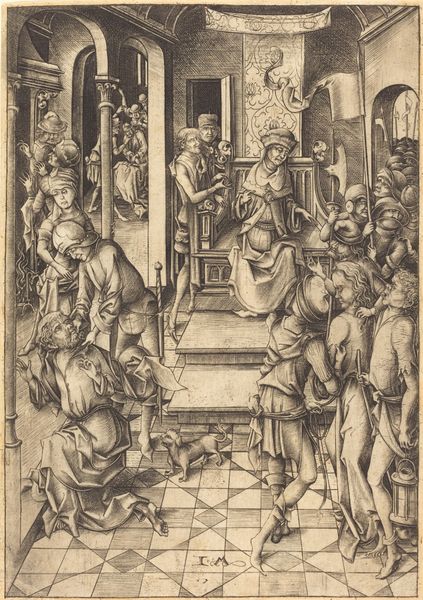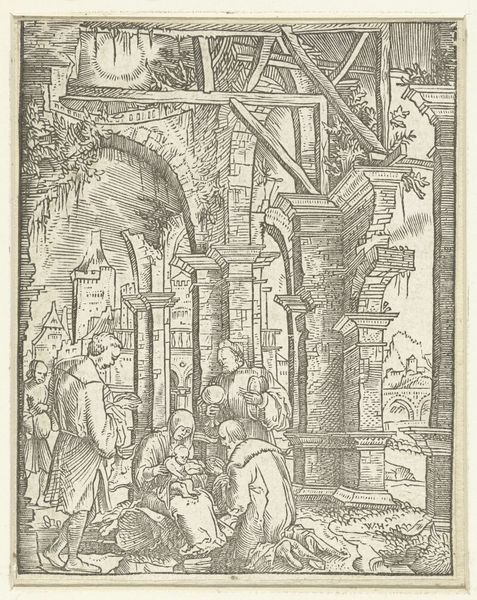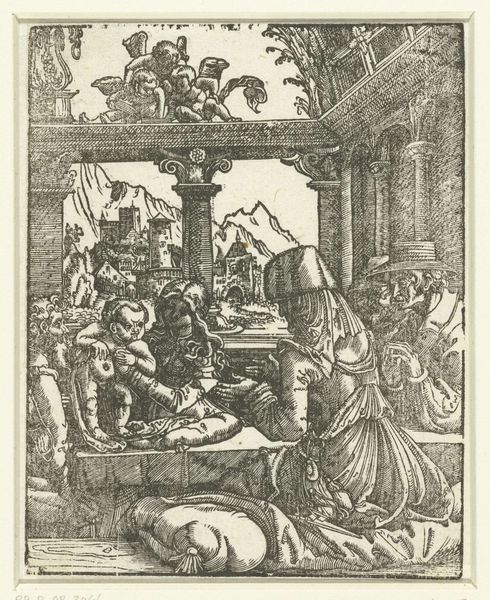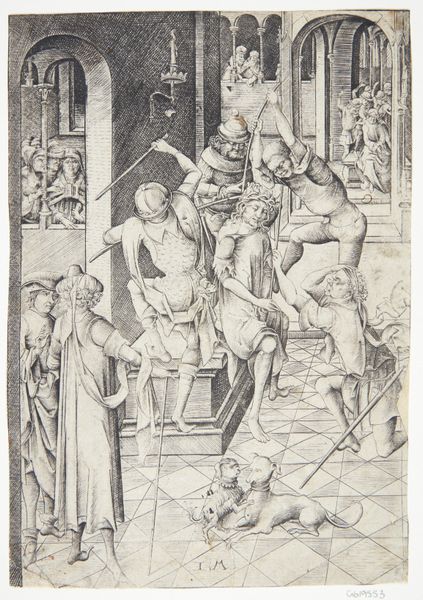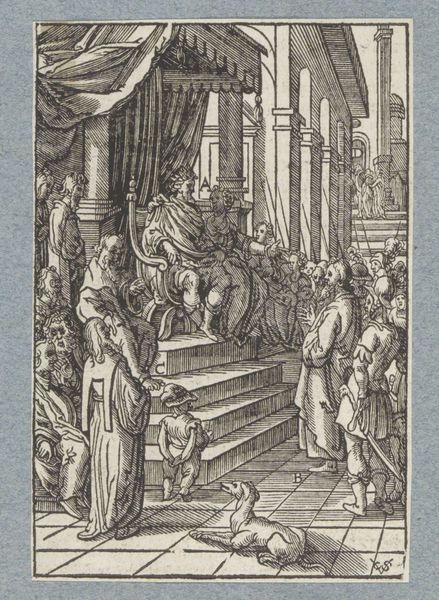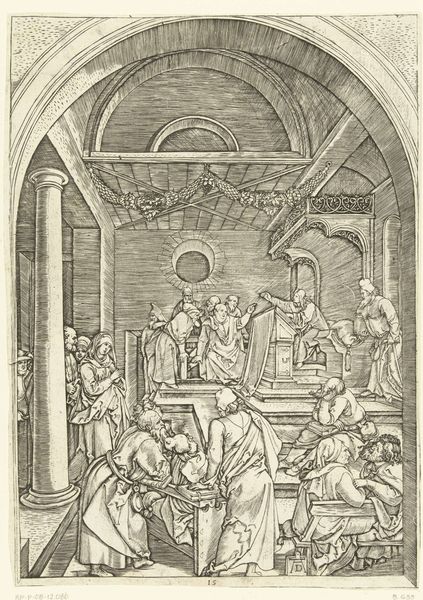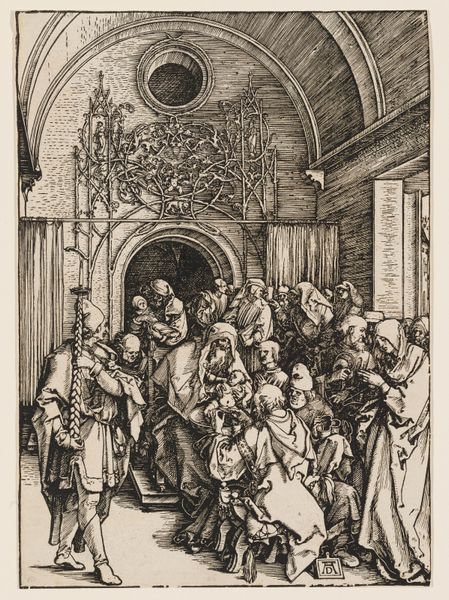
print, engraving
#
pen drawing
# print
#
figuration
#
11_renaissance
#
line
#
history-painting
#
italian-renaissance
#
engraving
Dimensions: height 295 mm, width 218 mm
Copyright: Rijks Museum: Open Domain
Curator: Let’s explore this print by Marcantonio Raimondi titled, "Presentation of Mary in the Temple," created around 1510-1515. Editor: It’s surprisingly…stark, isn’t it? The architectural details are so crisp and the figures rendered with these insistent lines, but the overall mood feels almost austere, or maybe simply very focused. Curator: Consider how this piece functioned in its era. Prints such as these allowed for the broad distribution of imagery. It served to reinforce religious doctrine and to visualize sacred stories, and as Raimondi worked for Raphael it made accessible images conceived by this master, beyond a privileged public. Editor: True, the figures, despite their size and number, never quite convey emotional warmth; there’s something deliberately posed about their stances. I’m struck by how linear and architectural the whole composition is—even the folds of fabric seem dictated by a love for clean, defined form. The way that arched entryway mimics Mary's head creates great formal unity. Curator: The choice of this specific moment is interesting, too. Rather than focusing on Mary's life as a miraculous narrative, it emphasizes a ritual and social action of presentation. And note the people, those who look actively, those who rest. What do they symbolize within that scene? Editor: And look how the vertical lines in the pillars pull the eye upwards to the architectural embellishments. The Renaissance was certainly fascinated by classical motifs, seen here by this heroic sculpture with bow and dog within a frame that imitates an actual building! Raimondi used linear patterns to add texture where light and shading are simply suggested. The presentation itself feels stage-managed, like an organized display, so its symbolism is heightened. Curator: Indeed. The engraving provided the tools to spread this kind of display, while other religious interpretations existed through paintings available only to church visitors. I see a dialogue happening about the very nature of accessing divine concepts. Editor: This contrast between formal lines and symbolic subject, well, that gives me a fresh look at an old tale. Thank you for illuminating the social underpinnings! Curator: And thank you for detailing the power of shapes—together, it really shapes our reading of this art.
Comments
No comments
Be the first to comment and join the conversation on the ultimate creative platform.
